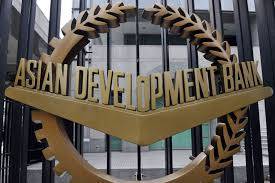ISLAMABAD - The Asian Development Bank (ADB) has warned that inflation rate would further accelerate to 12 percent in ongoing fiscal year (FY2020) because of a planned hike in domestic utility prices, taxes introduced in budget and lagged impact of currency depreciation.
“Inflation remained elevated at the start of FY2020 at 9.4% in July and August. It is projected to accelerate further to average 12.0% in FY2020,” the ADB stated in latest report, ‘Asian Development Outlook Update (ADOU) 2019’. It further stated that pressure from inflationary expectations can be relieved by the government’s commitment to refrain from directly financing the budget deficit by borrowing from the central bank as monetary policy continues to tighten.
Given the need for the authorities to address sizable fiscal and external imbalances, the ADB projected that economy is expected to slow further, with GDP growth projected at 2.8 percent in FY2020. Fiscal adjustments are expected to suppress domestic demand and demand contraction will keep growth in manufacturing subdued.
However, agriculture is expected to recover from weather-induced contraction this year, with major incentives in the government’s agriculture support package included in the budget for FY2020.
The economic reform program supported by the IMF envisages a multiyear strategy for revenue mobilization to pare public debt to a sustainable level. The budget assumes tax revenue increased to equal 14.3 percent of GDP.
With non-tax revenue projected at 2.3 percent of GDP in FY2020, total revenue is expected to increase to 16.6 percent of GDP. Expenditure in FY2020 is projected to equal 23.8 percent of GDP with an increase of 1.8 percentage points in current spending to cover larger interest payments and higher allocations for social spending to avoid hurting the poor as reform progresses.
At the same time, to support the adjustment efforts, the government set the federal government wage increases below the inflation rate. Development spending is projected to rise to 3.6 percent of GDP in FY2020 and support stronger social spending in the FY2020 budget.
According to the ADB projection, the budget deficit in FY2020 is expected to equal 7.2 percent of GDP—still large but 1.7 percentage point lower than the FY2018 outcome.
Financing is expected to come mostly from external and non-bank sources after the government announced that it would not borrow from the central bank toward financing the budget deficit in FY2020. Resource allocation indicates a shift toward external borrowing, with net external financing estimated at Rs1.8 trillion, or 4.2 percent of GDP. Financing from nonbank sources is projected at PRs833 billion, or 1.9 percent of GDP.
To strengthen fiscal discipline, the government has recently adopted the Public Financial Management Act in the context of the FY2020 finance bill. Working with provincial governments, the federal government will prepare a fiscal strategy to align provincial expenditure and the annual deficit with budgetary targets that have heretofore been routinely breached.
Capacity will be strengthened in the Ministry of Finance for monitoring fiscal risks and conducting cash management.
On the external front, the trade deficit shrank by nearly half in July, the first month of FY2020, from $3.4 billion a year earlier to $1.8 billion.
With further narrowing of the trade deficit and a continued positive trend in workers’ remittances, the current account deficit is projected to narrow further to 2.8% of GDP in FY2020. Import payments will remain subdued, reflecting weak economic activity and the pass-through of past rupee depreciation against US dollar. The real effective exchange rate is now thought to be near equilibrium, and a lower and more stable rupee is expected to improve export competitiveness.
Foreign capital inflows are expected to increase. Foreign direct investment should revive as investors’ confidence is restored with implementation of the IMF stabilization and reform program. This should also help bring additional finance from multilateral institutions and other international partners.
Along with the activation of a Saudi oil facility with potential disbursements of $1 billion in the current fiscal year, these developments are expected to raise foreign exchange reserves to reach more than $10 billion by the end of FY2020.
According to the ADB, Pakistan’s economy in fiscal year (FY) 2019, which ended on 30 June, is showing signs of recovery as the government’s fiscal consolidation and austerity measures to address the structural weaknesses started to take effect. However, the growth rate moderated to 3.3% during the period reflecting persistent macroeconomic imbalances and heightened external challenges.
The update of the Asian Development Bank’s (ADB) flagship annual economic publication noted the current account deficit eased from 6.3% of gross domestic product (GDP) in FY2018 to 4.8% in FY2019. The trade deficit narrowed by almost 11.5% to $28.2 billion as rupee depreciation drove down merchandise imports by 7.4%, particularly for goods other than petroleum.
Despite currency depreciation in real effective terms, merchandise exports declined by 2.2%, partly because low cotton production constrained textile exports. Workers’ remittances stirred from 3 years of near stagnation to grow by 9.7%, lending support to the current account.
Pakistan has done well in stabilizing the economy in face of strong challenges by taming the spiraling current account deficits and export bill and through robust implementation of reforms to improve governance and rejuvenating country’s competitiveness,” said Xiaohong Yang, ADB Country Director for Pakistan.
“Pakistan need to press ahead with macroeconomic and structural reforms; revitalizing public sector enterprises; improving revenue collection, energy and water security, and leveraging improved security and regional cooperation opportunities, to secure the hard won gains and promote growth.”






